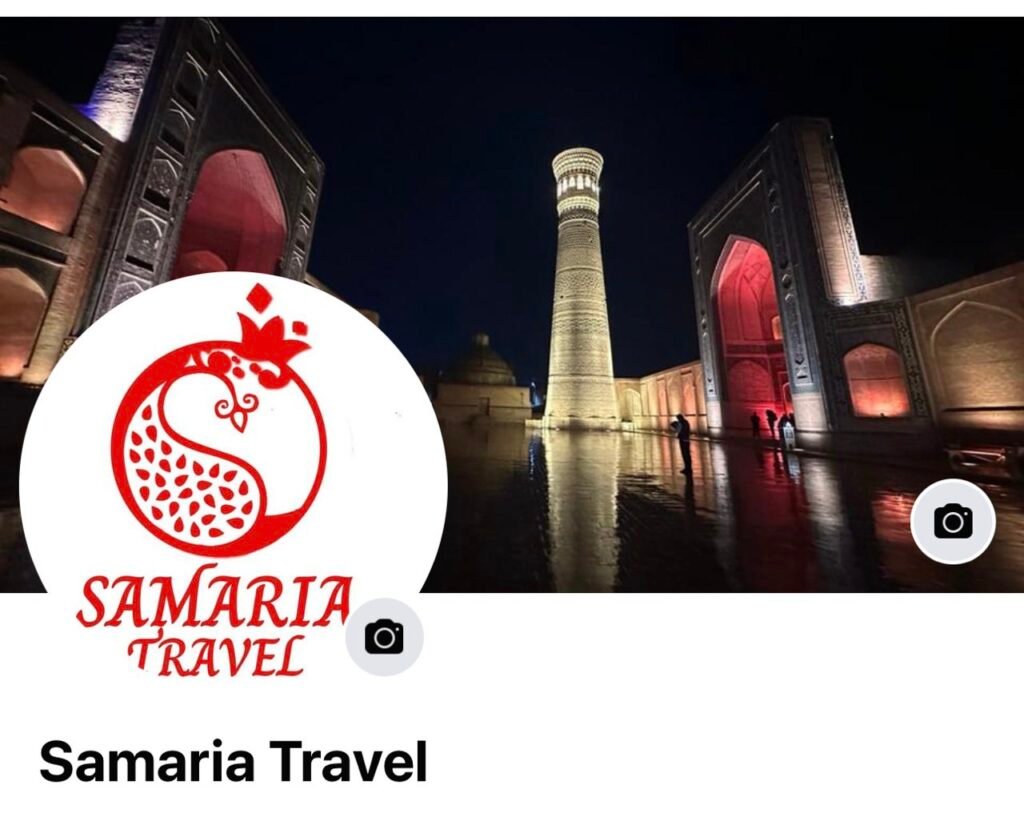Uzbekistan’s MUSLIM SACRED PLACES 13 Days
Category : Top Tours in Uzbekistan

Overview
The amazing Thirteen-Day religious tour in Uzbekistan will introduce you less touristy, yet very interesting and significant holy places. You will visit Zangiata mausoleum in Tashkent, who was Muslim holy sheykh Ay-Khodja lived in XIII century. This place is now a popular pilgrimage destination for people from many countries. You will also visit the Meseum of Oriental manuscripts collection, among which the world’s oldest Koran, which was produced just 19 years after the death of Mohammed called Caliph Osman-Koran from the VII century which is written in a vellum. In Samarkand you will visit patron saint, Kussam ibn Abbas, a cousin of the Prophet Mohammed who came to convert Zoroastrian Sogdiana to Islam. You will also visit Complex of Imam al Bukhari, the religious leader, the famous theologian, the hadith collector (Hadith – the science of Hadith, reports about the sayings and deeds of Prophet Muhammad) and the author of the second most important book of the Muslims after the Koran “Al-Jomiy al-Saheeh”(“Secure book “). In Termez you will visit Sufi Abu Abdullah Mohammed ibn Ali at Termezi, nicknamed “Al Hakkim” (the wise), was a ninth century Sufic, jurist, mystic and author who lived and received his pupils in Old Termez. In Bukhara you will do the pilgrimage to the holy places of Sufism and pay a visit to the burial places of Seven Sufi Saints, including the mausoleum of Bakhouddin Naqshband, the founder of the Naqshbandi Sufi order. In Khiva you will visit the Pahlavan Mahmud Mausoleum (also known as Palvan Pir) marks final resting place of Pahlavan Mahmud, wrestler, poet and furrier who unexpectedly became a revered saint.
ITINERARY & DETAILS
Day 1: Arrival in Tashkent
Arrival in Tashkent. Met in front of the arrival building of the airport by an English speaking guide and transfer to the hotel in Tashkent city. Free time for rest after flight.
Day 2: Tashkent
Tashkent is the capital of Uzbekistan and has approximately 3 million inhabitants. The city is located in the north eastern part of the republic, in the valley where the river Chirchik is located. In the North of Tashkent the snow-covered tops of Big and Small Chimgan mountain can be seen. Tashkent is the fourth largest in the Commonwealth of Independent States after Moscow, St Petersburg and Kiev.
Visiting sights:
Zengi Ata Mausoleum— the complex 12 kilometers south of Tashkent ranks among the holiest sites in the province. Zengi Ata, or “Dark Father”, was dark-skinned Sheikh Ay Khodja, a XIII century Sufic preacher and patron saint of shepherds.
Independence Square (Mustaqillik Maydoni)—is one of the largest square in the city. It is packed with monuments and fountains, and the most important monument is the golden globe representing the independence of Uzbekistan and a mother with a child in her arms. One of the interesting corner of the square is Crying Mother Statue devoted to the honor of 430,000 Uzbek soldiers who died in the World War II.
Amir Timur Square, the centre of the modern city, is green space with plenty of flowers and fountains. The square covers the most important buildings both political and cultural. In the middle of the square is the statue of Amir Timur (known in Europe as Tamerlane) on horseback, hotel “Uzbekistan” which was built in 1974, University of Law (former Women’s Gymnasium), Museum of Amir Timur, well-known Tashkent Clock Towers (the first tower was constructed in 1947 to house the clock mechanism from Eastern Prussia, a war trophy brought back to Tashkent by watchmaker Ayzenshteyn), and Uzbekistan Forums Palace.
Day 3: Tashkent-Termez (flight)
Termez is the southern part of Uzbekistan and its history stretches back some 2,500 years. A Graeco-Bactrian city, it thrived financially, culturally and spiritually at the meeting point of Mediterranean, Indian, Persian, Chinese and central Asian civilizations.
Visiting sights:
Sufi Abu Abdullah Mohammed ibn Ali at Termezi, nicknamed “Al Hakkim” (the wise), was a ninth century Sufic, jurist, mystic and author who lived and received his pupils in Old Termez.
Sultan Saodat complex— formed between X-XVII centuries, the family necropolis of the Termez Sayyids, supposed descendants of Ali.
Mausoleum Of Khoja Isa Mohammed Imam Termezi the religious leader, he travelled across the Islamic world for 30 years collecting sayings of the Prophet to contribute to the Hadith, the holiest book after the Qu’ran.
Day 4: Termez— Shakhrisabz—Samarkand
Transfer to Samarkand via Shakhrisabz, birthplace of Amir Temur (“the green city” in Uzbek). The old part of Shakhrisabz city has been declared a UNESCO world heritage site and contains an exceptional collection of monuments, including:
Ak Saray Palace (“a white palace” in Uzbek) built in 1380-1404,
The complex of Dor-us Siyadat (“place of sadness” in Uzbek) from XIV century
Dor-ut Tilavat (“place of praying” In Uzbek) from XIV-XV centuries.
After sightseeing in Shakhrisabz continue to drive to Samarkand.
Day 5: Samarkand
Samarkand, one of the most ancient cities of the world, a contemporary of the Rome, Athens and Babylon, has a 2750-year-old history. “The Mirror of the World”, “The Garden of the Soul”, “The Jewel of Islam”, “The Precious Pearl of the Moslem World” are some the names given to this unique city. In ancient Greece, this city was known as Marakanda.
Visiting sights:
Makhdumi Azam complex— built in the period of XVI-XIX centuries. The complex is located 12 kilometers north of Samarkand, one of the present cities of Uzbekistan. His full name is Said Jaloliddin Kosoniy (Said Ahmadkhuja) and was born in 1461, who was devout follower of Bukhara’s Naqshbandi and died in 1542 aged 81.
Imam Mohammed Al-Bukhari Mausoleum— after the Koran, the book most revered by Muslims is “Al-Jome as-sahih” the collection of Hadith (words, actions and habits of the Prophet Mohammed) selected by, amongs others, Abu Abdullah Mohammed ibn Ismail Imam Al Bukhari. He was born in 810 in Bukhara, one the present cities in Uzbekistan. At the age of 16 he made pilgrimage to Mecca and then Al Bukhari was set on his chosen task of roaming the Islamic world in search of Hadith. His book “Al-Jome As-sahih (Secure book)” took 16 years to compile from over 600,000 traditions, gathered from over 1000 sheikhs.
Note: Right now in the complex of Imam al-Bukhari restoration works going on. The guests can visit the complex on the side not entering inside of it, sitting in the special place for visitors which is 50 meters away from the Al-Bukhari’s tomb where Imam of the mosque recite Sura from the Koran and also new mosque of the complex is planned to be ready the end of 2024.
Day 6: Samarkand
Visiting sights:
Observatory of Ulugbek (the Astronomer King, the author of astronomic tables known throughout the world), Temur’s grandson, who was both an eminent ruler and scholar.
Shahi Zinda Complex— translates as “alive king” and it is a reference to Samarkand’s patron saint, Kussam ibn Abbas, a cousin of the Prophet Mohammed who came to convert Zoroastrian Sogdiana to Islam. The Complex built in the period of XII-XX centuries.Burial place of royal persons and nobles. One of the most spiritual place in Uzbekistan.
Bibi Hanim mosque XV century
Siab market (“black river” in Uzbek).
Day 7: Samarkand—Bukhara (by driving takes 5 hours)
Bukhara, one of the most ancient cities of Central Asia, has a 2500-year-old history. Bumichkat “New Castle”, Al Madina as-sufriyya “Copper City”, Madinat at-tujjor “City of Traders”, Foxira “Honorable City” are some the names given to this unique city.
Visiting sights:
Gijduvan is a town which is located 45 km north-eastern of Bukhara. Since ancient times Gijduvan has been known as a craft and trade centre. The incredibly beautiful and truly unique ceramics is a special pride of the town.
Pottery workshop—the family of Alisher Narzullayev is the sixth generation has been making pots in the town of Gijduvan. The guests have a chance to learn more about Gijduvan school of pottery and have guided tour in the pottery centre. This school makes tea cups, bowls and dishes in traditional floral designs of local browns and yellows.
Naqshbandi Sufism complex— Islamic saint Bakhauddin Naqshband, the famous Asian philosopher and Sufi, the founder of a Sufi order which was later named Naqshbandi, lived in XIV century. He became patron saint and the complex is the holiest site in Bukhara. He made 32 times the Hajj pilgrimage to Mecca and local people consider this place as little Mecca. Pilgrimages are made to this place from all over the world.
Day 8: Bukhara
Visiting sights:
Today In Bukhara you will do the pilgrimage to the holy places of Sufism and pay a visit to the burial places of Sufi Saints.
Day 9: Bukhara
Visiting sights:
Ismail Samaniy mausoleum (IX-X centuries)
The mausoleum of Chashmai Ayub (“Prophet Job”)
Functioning mosque Bolo Hauz (XVII century)
The Citadel Ark (I-XX centuries)
Poi Kalon complex (“The foot of tall” in Uzbek) from XII-XVI centuries.
Day 10: Bukhara—Khiva (by driving takes 7 hours)
Khiva, one of the most ancient cities of Central Asia, has a 2500-year-old history. Khizauv “Fort”, Kheykanik (the name of canal which run in the area), Kheykanik, Kheyvak and Khiva are some the names given to this unique city.
Day 11: Khiva
Visiting sights:
Today you will discover ICHAN QALA (Inner Fortress). The feeling in Inner Fortress transfers people into the past in a city with narrow lanes, low houses, mosques, mausoleums and madrassahs.
Day 12: Khiva—Tashkent (flight)
Visiting sights:
Khazrati Imom Complex (XVI-XX centuries) the historical spiritual heart of the city (consists of functioning Friday mosque “Khazrati Imom Mosque” from 2007, Barak-Khan Madrassa from XVI-XVIII centuries—present-day serving as shopping place, Tellya Sheikh Mosque from XIX century, Muyi Moborak Library— holds rare Oriental manuscripts collection, among which the world-famous Caliph Osman-Koran from the VII century and the mausoleum of Abu Bakr Mohammed Kaffal Shashi, the first Koran preachers of Central Asia, who was also a famous scientist).
Muyi Moborak Library— means “the sacred hair”, a reference to a holy hair of the Prophet Mohammed. This museum holds rare Oriental manuscripts collection, among which the world’s oldest Koran, which was produced just 19 years after the death of Mohammed called Caliph Osman-Koran from the VII century which is written in a vellum. This Koran is one of four copies made shortly after the Caliph’s death and was brought to Uzbekistan by Amir Temur (in Europe known as Tamerlane).




